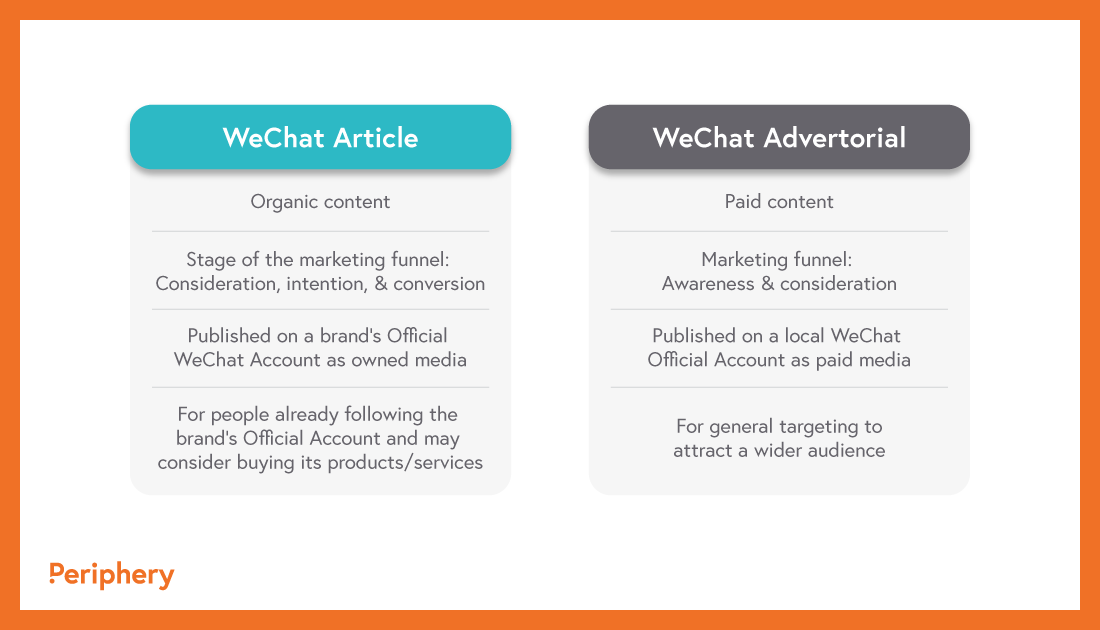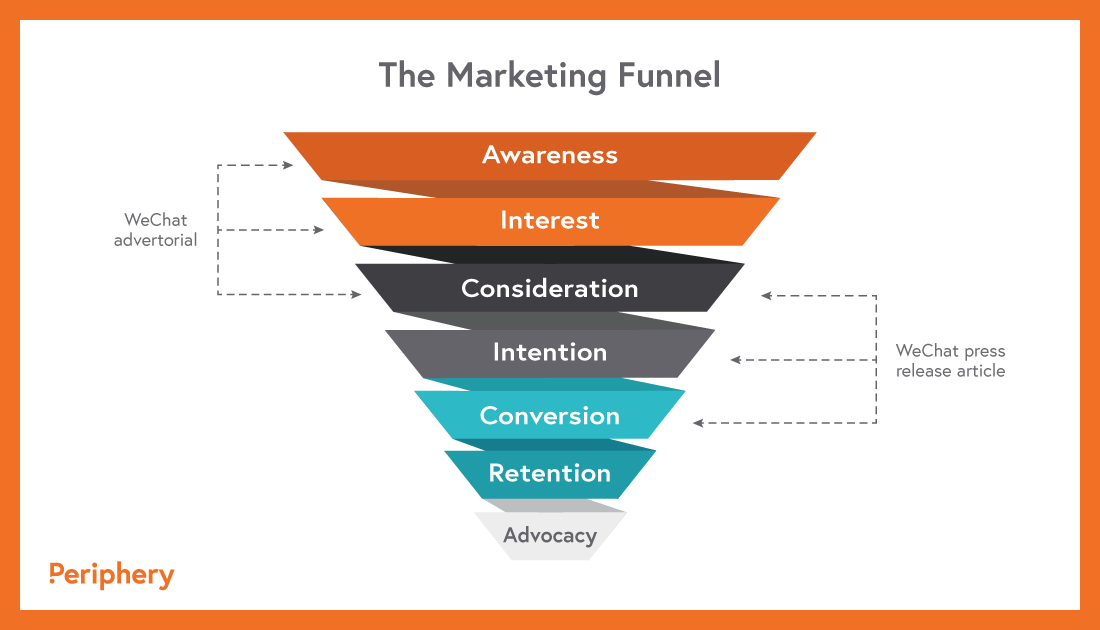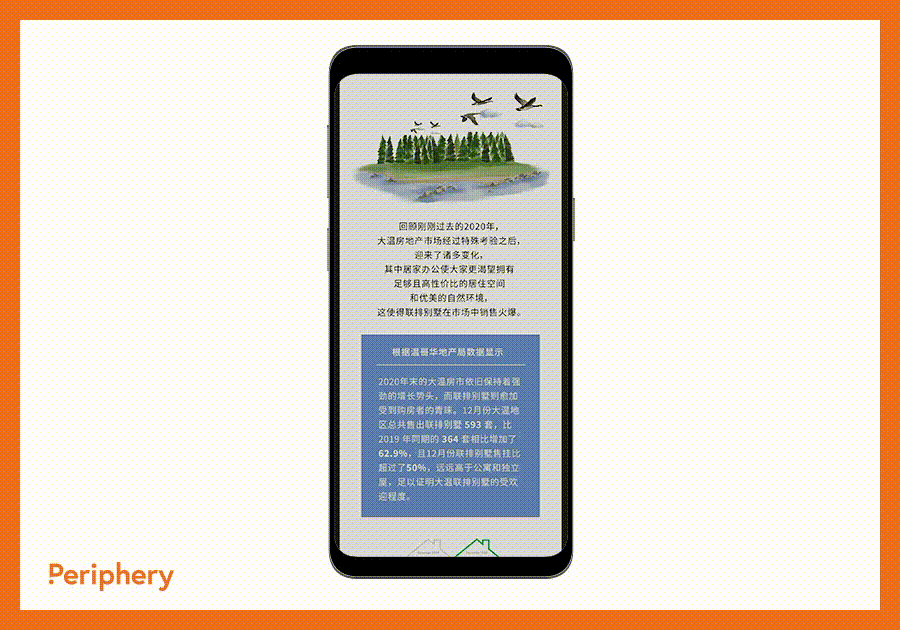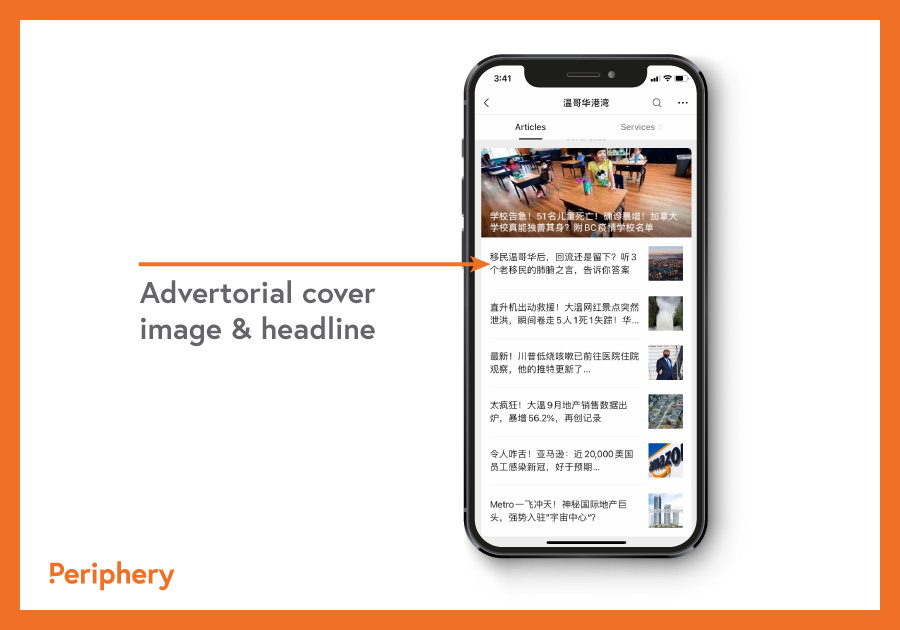At 1.2 billion users and the number one social network in China, WeChat is the 6th most popular social network worldwide. More than 45 billion messages are sent on the platform every day. The power this social network holds in reaching the Chinese audience, and frankly, a giant portion of the entire world population, is undeniable.
We’ve already explained the differences between the two types of WeChat accounts, and as WeChat experts, you’re about to learn the difference between two distinct types of WeChat content: advertorials and press release articles.
When it comes to content planning and execution, there are slight differences in the tactics used between WeChat press release articles and advertorials.
But first, what’s a WeChat article, and what’s a WeChat advertorial?
WeChat Article
WeChat articles are long-form, organic pieces of content official and individual accounts can post. They are similar to blog posts and can contain text broken up into sections with subheadings, images, embedded videos, and links to other content on WeChat. Articles can contain heavily promotional content (refer to the comparison chart below).
WeChat Advertorial
WeChat advertorials refer to articles with an engaging design format that are published on a third-party media account with a sizeable amount of followers and thus, influence. As WeChat is all about long-form content, advertorials have become one of the most powerful ways of educating readers and spreading brand awareness.

Today, we will focus on WeChat advertorials that aim to generate greater brand awareness and provide some best practices. WeChat advertorial marketing is very popular among Chinese-speaking audiences around the world, especially in mainland China where it originated, and is a great way to engage this audience.
Before we get into this, you’ll need to understand the marketing funnel and how advertorials and articles work to engage prospects at each stage.
The Marketing Funnel
The marketing funnel refers to the stages a prospect goes through beginning from the time they become aware of your business and what it has to offer, to their advocacy for your products or services, and all the stages in between. It is important to note not everyone will hit all stages of the marketing funnel, but as a marketer it is your responsibility to meet your buyer where they are in their unique journey in order to gently guide them to ‘convert’, also known as make a purchase.

The Differences Explained
But what are the differences between WeChat advertorials and press release articles if both of them are used to promote brands, products, and services?
1. The Purpose
Press Release Article
- Provide information, an official statement, or announcement as the primary party with first-hand information.
- Promote your business’ presence on the internet via blogs, websites, and social networking, as well as sending them to media organizations.
- If your press release content attracts the attention of news media, then they might even voluntarily use the main points of your article and turn it into their own article, making it earned media for you, and helping to spread the word at no charge.
WeChat Advertorial
- Attract those who may not have heard of your brand to interesting and insightful information addressing your target audience’s curiosity and concerns with a focus on educating rather than being overly promotional
- Drive traffic to the website, landing page, or lead to sales contacts as a final call-to-action (CTA).
- To promote your business’ presence on the specific Chinese-speaking channels that naturally target the Chinese market in Canada.
2. Content: “Soft” vs “Hard”
Arguably the most significant difference between a press release and an advertorial is that advertorials are “soft”, which means they are less formal and therefore more engaging, while the press release is “hard” — formal and typically fairly dry. WeChat advertorials in Chinese are called “软文” which translates to “soft articles”.
A press release article is an official announcement that a company issues for the media and beyond. The first paragraph should answer the “who,” “what,” “why,” and “where.”
An example from Apple’s iPhone, “October 13, 2020. Toronto, Ontario — Apple today announced iPhone 12 Pro and iPhone 12 Pro Max, introducing a powerful 5G experience and advanced technologies that push the boundaries of innovation for users who want the most out of iPhone”, followed by its features, experience, executive’s quotes, etc. Apple wants to let audiences know directly that we are launching this product to begin selling immediately.
What to avoid
The hard sell is something that we always want to avoid in constructing WeChat advertorials. If we start with “This 1-3 bedroom new home in downtown Vancouver is selling now”, those who have no intention to look for a new home right now may stop reading and we lose these potential customers. Think about it — would you want to spend the time to read a 500-word article that goes on and on trying to sell you something you have no intention of buying?
An effective tactic when writing an advertorial is to promote your product or service without your audience noticing it is an advertisement at first. The idea is to attract a wider range of audiences as per the top of the marketing funnel.
Nowadays people are busy, and don’t have the attention spans to read things carefully. It is critical to catch people’s attention from the first few words with interesting and insightful information to encourage them to continue to read.
What to do instead
However, if we begin our advertorial like this: “Do you know how strong the Vancouver housing market is performing right now? Let’s have a look at data from the Real Estate Board of Greater Vancouver: In February 2021, residential home sales increased by 73.3% compared to the same time last year, with a 56% increase since January 2021, and the sales-to-active listings ratio was 44.6%. It’s evident the housing market in Metro Vancouver is booming, and despite the current landscape, there is still an upward trend in prices.”

Naturally, many people who are not interested in purchasing real estate now may start to have a sense of urgency and think it may be time that they consider a new home before a significant price increase, sparking curiosity about what’s in store for the rest of the article.
As advertorials are for general targeting, it’s a good idea to write content about a current trending topic or breaking news, tell an interesting story, spark discussion, promote useful tips and knowledge, etc. to attract a wider range of people, even those who may not be interested immediately.
3. The Headline & Cover Image
The headline and cover image are the key factors to attract clicks. No matter how amazing the article body is, if the headline and the cover image are boring or it looks like an obvious advertisement, then it will turn people away.
For example, if it is a retail promotion advertorial, we want to make the headline fun and lighthearted, while for real estate ones it should contain useful topics that are related to recent social issues or news to cast a wide net. It is important to remember that although there are many best practices, there is no single right answer, but infinite ways to be creative.

In Conclusion
Knowing the differences between WeChat press release articles and WeChat advertorials is crucial to write the best content for your target audience. Keeping these considerations in mind when planning and creating content will achieve an increased number of views and greater engagement, ultimately leading to a successful Chinese marketing campaign.
At Periphery, our in-house content creation team are experts in WeChat marketing. We are experienced in producing large amounts of culturally-fluent content and spearheading countless highly successful Chinese marketing campaigns. Our passion is helping our clients promote their brand, product, or service effectively to Chinese audiences in both Canada and China. Contact us today to learn more about how we can help your organization reach a new market.


